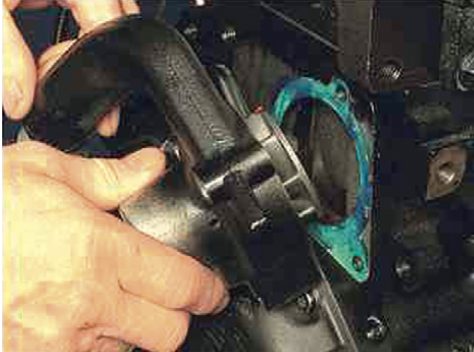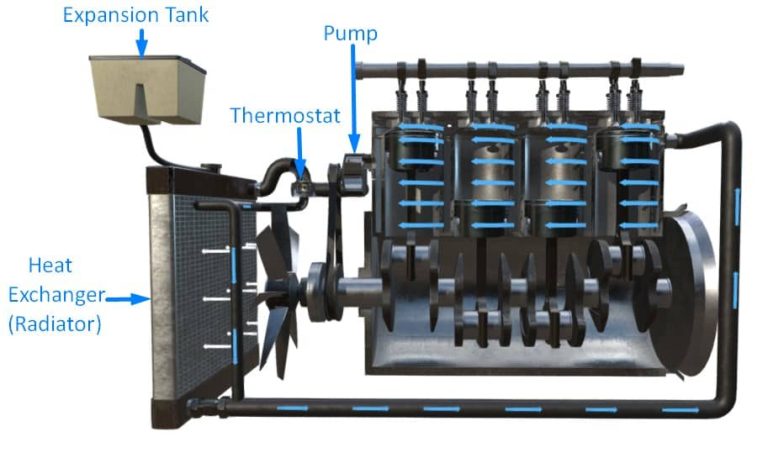Water pumps play a crucial role in the cooling system of an engine. They circulate the coolant, which absorbs heat from the engine, and transfer it to the radiator for dissipation. One common type of water pump is the water pump in the water jacket. In this blog post, we will discuss what a water pump in a water jacket is, how it works, and its advantages.
What is a water pump in a water jacket?
A water pump in a water jacket is a type of water pump that is installed inside the engine block or cylinder head. It is commonly used in liquid-cooled engines, where the coolant flows through passages in the engine block and cylinder head, called water jackets. The water pump in the water jacket is designed to circulate the coolant through these passages to transfer the heat generated by the engine to the radiator for dissipation.
How does a water pump in a water jacket work?
A water pump in a water jacket consists of an impeller, a housing, and a shaft. The impeller is a rotating component that is responsible for circulating the coolant. It is located inside the housing, which is bolted to the engine block or cylinder head. The shaft connects the impeller to the engine’s crankshaft, which drives the impeller.
When the engine is running, the impeller rotates, creating a low-pressure zone at its center. This low-pressure zone sucks the coolant from the radiator and pushes it through the water jacket passages in the engine block and cylinder head. As the coolant flows through these passages, it absorbs heat from the engine and transfers it to the radiator for dissipation. The coolant then returns to the water pump in the water jacket, and the process repeats.
Advantages of a water pump in a water jacket
One of the main advantages of a water pump in a water jacket is its compact size. Since it is installed inside the engine block or cylinder head, it takes up very little space in the engine compartment, leaving more room for other components. This is particularly important in modern cars, where space is at a premium.
Another advantage of a water pump in a water jacket is its efficiency. By circulating the coolant through the water jacket passages, it ensures that the engine is cooled uniformly, which prevents hot spots and overheating. This, in turn, prolongs the engine’s life and improves its performance.

Conclusion
Water pumps in water jackets are an important component of a liquid-cooled engine’s cooling system. They circulate the coolant through the engine block and cylinder head to transfer the heat generated by the engine to the radiator for dissipation. Their compact size and efficiency make them an ideal choice for modern cars. Understanding how water pumps in water jackets work can help you maintain your car’s cooling system and ensure that your engine runs smoothly for years to come.
One important thing to note is that there are different types of water pumps used in liquid-cooled engines, and water pumps in water jackets are just one of them. Other types include belt-driven water pumps and electric water pumps. The choice of water pump depends on various factors such as the engine’s size, power output, and intended use.
Another advantage of water pumps in water jackets is their durability. Since they are installed inside the engine block or cylinder head, they are protected from external elements such as dust, debris, and moisture. This, in turn, reduces the risk of damage and extends the water pump’s lifespan.
It’s also worth noting that water pumps in water jackets are typically more difficult to replace compared to other types of water pumps. This is because they are located inside the engine block or cylinder head, which requires disassembling a significant portion of the engine to access the water pump. As a result, the cost of replacing a water pump in a water jacket is often higher than replacing other types of water pumps.
To ensure that the water pump in your engine’s water jacket is working correctly, it’s important to perform regular maintenance on your vehicle’s cooling system. This includes checking the coolant level, inspecting the radiator and hoses for leaks, and ensuring that the water pump is functioning correctly. If you notice any signs of coolant leaks or overheating, it’s crucial to have your vehicle checked by a mechanic as soon as possible to prevent any potential engine damage.
In summary, water pumps in water jackets are an essential component of a liquid-cooled engine’s cooling system. They are compact, efficient, and durable, making them an ideal choice for modern cars. However, replacing them can be challenging and costly, so it’s important to maintain your vehicle’s cooling system regularly to prevent any issues.
Advantages:
- Compact design: Since water pumps in water jackets are installed inside the engine block or cylinder head, they take up very little space in the engine compartment, leaving more room for other components.
- Efficient cooling: By circulating the coolant through the water jacket passages, water pumps in water jackets ensure that the engine is cooled uniformly, which prevents hot spots and overheating. This improves the engine’s performance and prolongs its lifespan.
- Durability: Since water pumps in water jackets are protected from external elements such as dust, debris, and moisture, they are less prone to damage and have a longer lifespan than other types of water pumps.
Disadvantages:
- Difficult to replace: Water pumps in water jackets are located inside the engine block or cylinder head, which makes them more challenging to replace than other types of water pumps. This can result in higher replacement costs and longer repair times.
- Limited flow rate: The flow rate of a water pump in a water jacket is limited by the size of the pump and the diameter of the water jacket passages. This can restrict the engine’s cooling capacity, particularly in high-performance applications.
- Maintenance: Maintaining a water pump in a water jacket can be more challenging than other types of water pumps. Since they are located inside the engine block or cylinder head, accessing and inspecting them requires disassembling a significant portion of the engine.
Overall, water pumps in water jackets have many advantages, including their compact design, efficient cooling, and durability. However, they also have some disadvantages, such as being difficult to replace, having a limited flow rate, and requiring more maintenance. The choice of water pump type depends on various factors, such as the engine’s size, power output, and intended use. It’s important to consider all these factors before deciding on which type of water pump to use in your engine’s cooling system.










